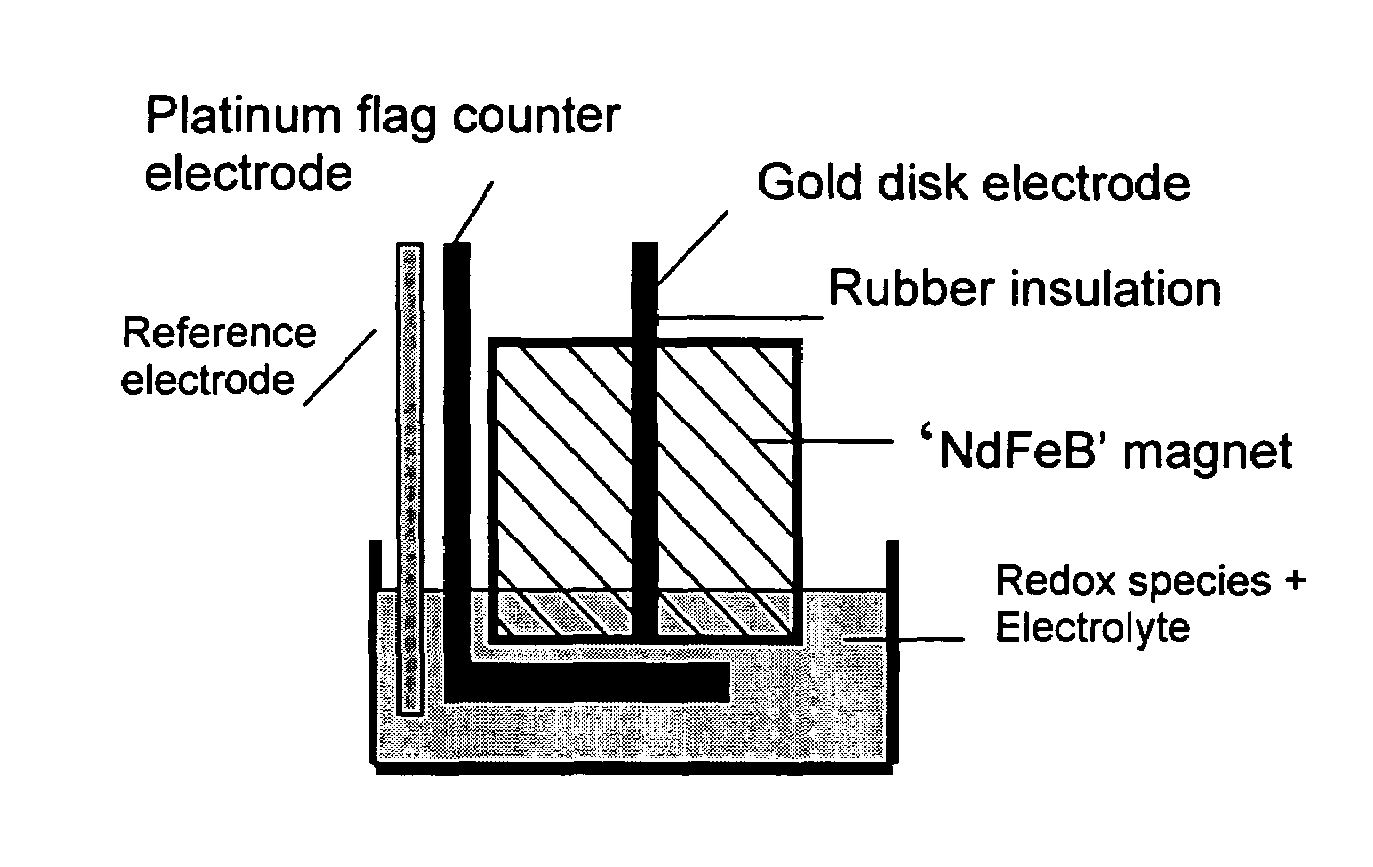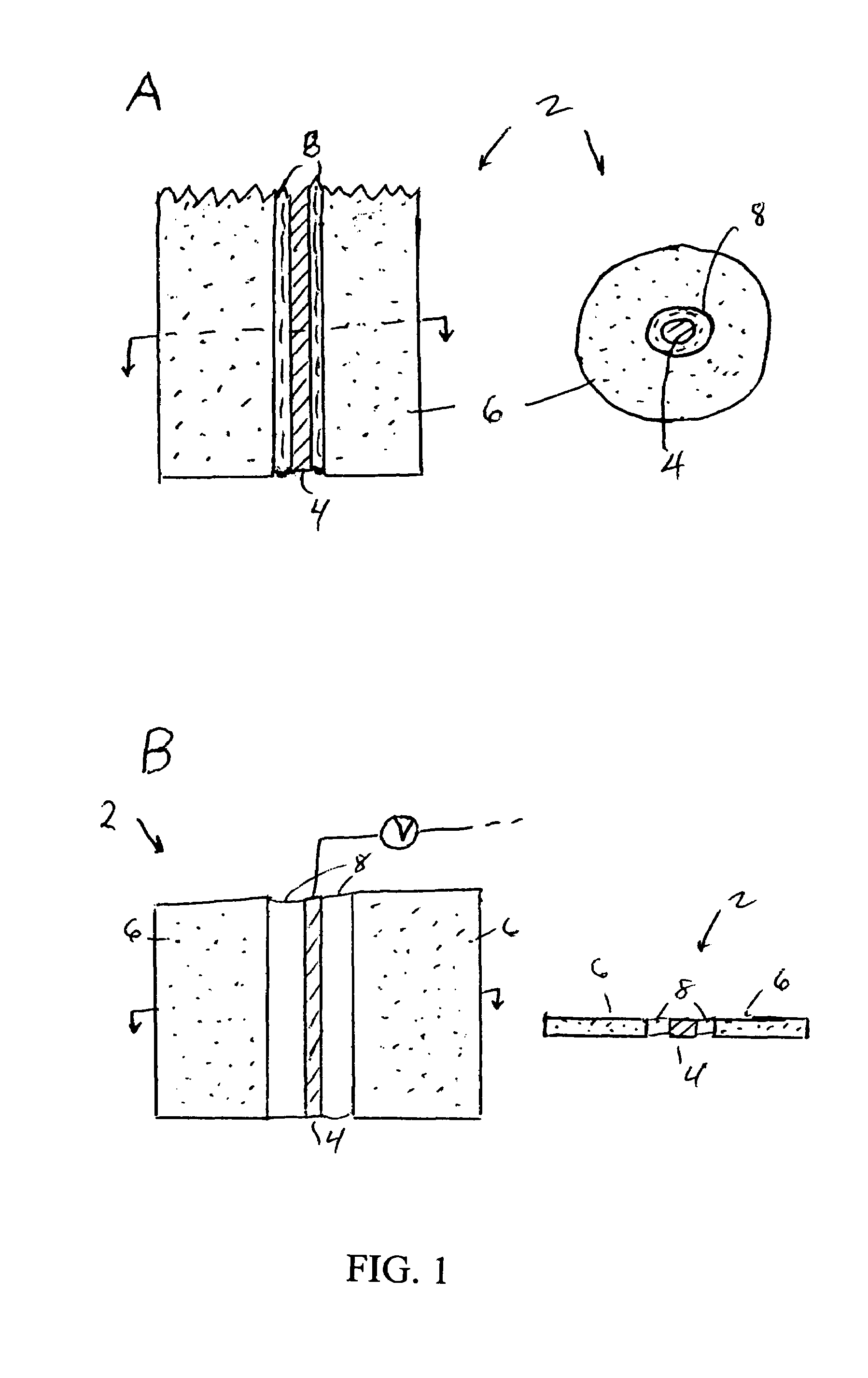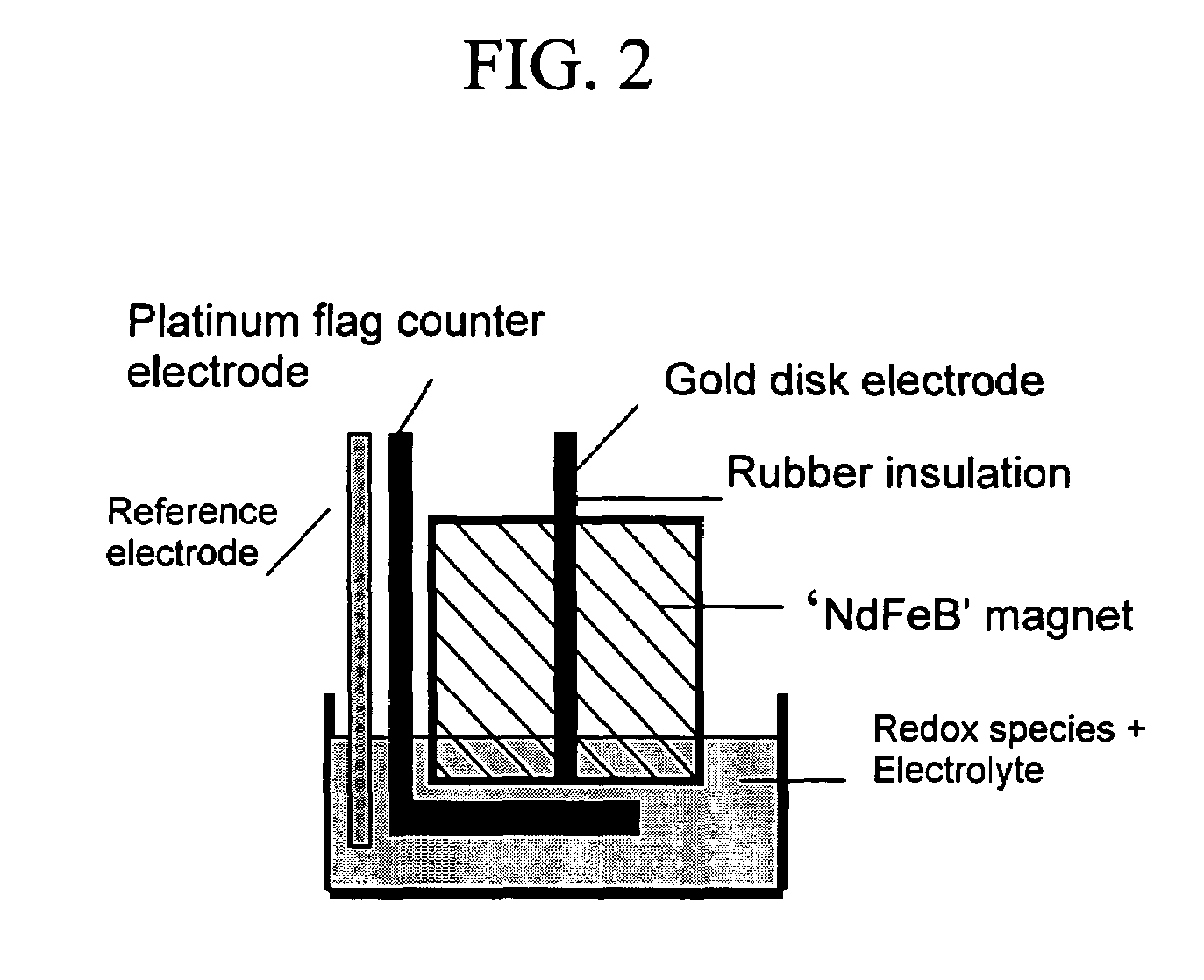Electrochemistry using permanent magnets with electrodes embedded therein
a permanent magnet and electrode technology, applied in the direction of magnetochemical variables, instruments, magnetic bodies, etc., can solve the problems of slow sample transport, inability to rapid mixing by itself, and most of the proposed devices and methods are not suitable for microstirring applications, so as to achieve the effect of accelerating mixing and low voltage requirements
- Summary
- Abstract
- Description
- Claims
- Application Information
AI Technical Summary
Benefits of technology
Problems solved by technology
Method used
Image
Examples
example 1
[0038]Magnetohydrodynamic (MHD) effects were studied with a gold disk (380 μm radius) electrode embedded in a permanent magnet using 0.06 M NB in 0.5 M TBAPF6 with acetonitrile solution. Two types of magnets were used for the study; an in-house bonded (Br=0.41 T) and commercial sintered (Br=1.23 T) Neodymium-Iron-Boron (‘NdFeB’) magnet (e.g., MCE, Inc., Torrance, Calif.). The experimental setup is shown in FIG. 2. The bonded ‘composite’ magnet was compression molded to a packing density 4.9 g / cc using isotropic spherical ‘NdFeB’ particles (MQP-S) (Magnequench) and epoxy resin (Epo-Kwick-208138) (Buehler).
example 2
[0039]Experiments were carried out in both perpendicular and parallel orientations. The results in FIG. 3 suggest that the enhancement of the voltammetric current in the perpendicular orientations is significant. An increase in the current signal represents an increase in mass transport of the reactant, i.e., NB species to the electrode surface. The diffusion-limited current ilim, given by Fick's first law, is much lower than the current obtained in the experiments. This demonstrates a third force other than diffusion-driven and natural convection-driven forces is responsible for the increase. The third force is the magnetic body force, which is Lorentz force FL and paramagnetic gradient force FP in perpendicular orientation, and all three magnetic forces (FL, FP, and F∇, where F∇ is magnetic field gradient force in parallel orientation.
example 3
[0040]The same study as in Example 2 was performed in the parallel orientation. The results are shown in FIG. 4. Enhancement of the voltammetric current is again observed.
PUM
 Login to View More
Login to View More Abstract
Description
Claims
Application Information
 Login to View More
Login to View More - R&D
- Intellectual Property
- Life Sciences
- Materials
- Tech Scout
- Unparalleled Data Quality
- Higher Quality Content
- 60% Fewer Hallucinations
Browse by: Latest US Patents, China's latest patents, Technical Efficacy Thesaurus, Application Domain, Technology Topic, Popular Technical Reports.
© 2025 PatSnap. All rights reserved.Legal|Privacy policy|Modern Slavery Act Transparency Statement|Sitemap|About US| Contact US: help@patsnap.com



